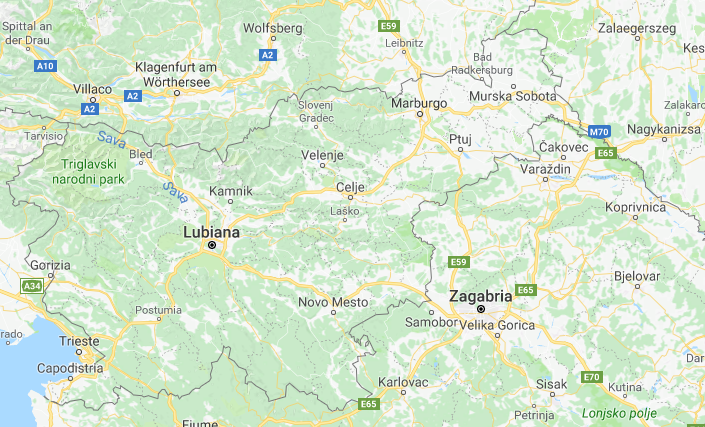Giuseppe Sandro Mela.
2018-06-02.
Domani tre giugno si terranno le elezioni politiche in Slovenia. 90 i seggi parlamentari in palio.
Il meccanismo della legge elettorale è alquanto complesso, ma ben spiegato nella pagina de la Commissione elettorale nazionale.
«Per le elezioni dei deputati dell’Assemblea nazionale si formano otto circoscrizioni elettorali. Ogni circoscrizione è divisa in 11 distretti. In ogni circoscrizione sono eletti 11 deputati. La legge ha stabilito il principio che in ogni distretto elettorale si vota per un candidato. Nelle aree in cui vivono le comunità nazionali italiana e ungherese vengono formate circoscrizioni speciali.
Ai sensi della Legge sulle elezioni dell’Assemblea nazionale si applica una soglia di sbarramento al 4 %, che nel processo di assegnazione dei seggi è accertata dalla Commissione elettorale nazionale. Tra le liste che hanno raggiunto la soglia, i mandati sono distribuiti su due livelli:
– nella circoscrizione elettorale: i mandati parlamentari sono distribuiti sulla base del cosiddetto quoziente Droop;
– a livello statale: i mandati parlamentari sono distribuiti sulla base del cosiddetto metodo D’Hondt;
Dato che la Costituzione garantisce agli elettori una determinata influenza sulla ripartizione dei mandati ai candidati, questo avviene in parte grazie al fatto che dalla lista dei candidati (a seconda del mandato ricevuto) vengono eletti quei candidati che hanno ricevuto il numero più alto di voti, considerando il numero totale dei voti nei distretti elettorali in cui hanno partecipato. Gli elettori possono scegliere solo quel candidato dalla lista che compare nel loro distretto elettorale.»
*
——
Nota.
Il Quoziente Droop è la parte intera di {1 + [(totale dei voti) /( 1 + totale dei seggi)]}.
Il Metodo d’Hondt prevede che si divida il totale dei voti di ogni lista per 1, 2, 3, 4, 5… fino al numero di seggi da assegnare nel collegio, e che si assegnino i seggi disponibili in base ai risultati in ordine decrescente,
——
*
Il partito SDS, Slovenska demokratska stranka, è al momento proiettato al 26.1%, con un margine di 14.6 punto percentuali sopra il partito socialdemocratico SD. In questa condizione, il metodo del quoziente dovrebbe avvantaggiare l’SDS come numero di deputati ottenuti.
L’SMC, The Modern Centre Party, è il partito politico guidato dal primo ministro Miro Cerar.
*
«The Slovenian Democratic Party (Slovene: Slovenska demokratska stranka, SDS) is liberal-conservative political party in Slovenia. In 2003, it changed its name from the Social Democratic Party of Slovenia (Socialdemokratska stranka Slovenije). Led by Janez Janša, the SDS is a member of the European People’s Party (EPP), Centrist Democrat International and International Democrat Union. ….
On 20 March 2013, the second Janša cabinet was replaced as the government of Slovenia by the cabinet of Alenka Bratušek, a four-party centre-left coalition led by the current leader of Positive Slovenia, Alenka Bratušek.
In the 2014 European Parliament election, the SDS came in first place nationally, obtaining 24.78% of the vote, which returned three MEP seats out of eight allocated for Slovenia.
The party received 20.69% of the vote in the Slovenian parliamentary election on 13 July 2014, and won 21 seats in parliament. The party remained in opposition, this time to the cabinet of Miro Cerar.
During the Slovenian parliamentary election, 2018 the Party would run on a anti immigration platform ….
The Slovenian Democratic Party has around 27,000 members, which is the largest party membership in Slovenia. The party is subdivided into several organizations that cover specific segments; one of them is the Slovenian Democratic Youth (Slovene: Slovenska demokratska mladina, acronym SDM), the youth section of the party, currently led by Andrej Čuš.
Influential members and officials of the party include Matjaž Šinkovec who was co-founder of the Slovenian Social Democratic Union, Milan Zver, current vice president of the party and European MP, former chairman of the Slovenian National Assembly France Cukjati, and former ministers Dragutin Mate, Iztok Jarc, and member of European Parliament Romana Jordan Cizelj. Among the deceased members, the most prominent were Jože Pučnik, Rudi Šeligo and Katja Boh.
The Party is also affiliated with the major liberal-conservative think tank in Slovenia, the Jože Pučnik Institute. It is also close to the civic platform Rally for the Republic (Zbor za republiko).
The Party is Close to Hungary’s Prime Minister Viktor Orban, Fidesz party» [Fonte]
* * *
«Secondo gli ultimi sondaggi, il favorito dovrebbe essere il partito conservatore di opposizione, lo Slovenska demokratska stranka (Sds, il Partito democratico sloveno), guidato dall’ex primo ministro Janez Janša. La sua campagna elettorale è stata incentrata sulla questione migratoria, arrivando a proporre l’adesione della Slovenia al Gruppo di Visegrad.» [TG24]
